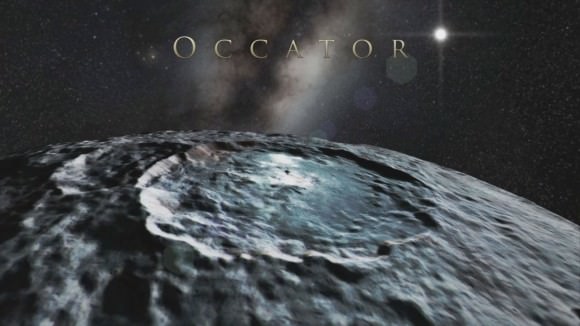Wow. This video will knock your socks off … at least it did mine. This new flyover video of Ceres was created using enhanced images taken by the Dawn spacecraft’s framing camera. It was produced by the camera team at the German Aerospace Center, DLR, using images from Dawn’s high-altitude mapping orbit of 900 miles (1,450 kilometers) above Ceres’ surface. The video shows a stark and stunning world.
“The viewer can observe the sheer walls of the crater Occator, and also Dantu and Yalode, where the craters are a lot flatter,” said Ralf Jaumann, a Dawn mission scientist at DLR.
The enhanced color used here helps to highlight subtle differences in the appearance of surface materials. There’s additional info at the end of the video, but for a quick reference, area with shades of blue contain younger, fresher material such as flows, pits and cracks, while brown areas clays, which, enticingly, usually form in the presence of water.
I had the chance to visit with Marc Rayman, Dawn’s chief engineer and mission director at JPL earlier this month, when I interviewed him for a book I’m working on about robotic space exploration. One thing he really stressed is that Ceres is a big place, with diverse terrain and a variety of features. This video really brings that home.
“Ceres has a surface area of 2,770,000 square kilometers … It’s a big surface and we haven’t seen all of it,” Rayman said. “It will be great to see what the new detail shows from the low altitude orbit, because those pictures will be four times better resolution than pictures we were able to get at our previous orbit.”
Dawn is now in its final and lowest mapping orbit, at about 240 miles (385 kilometers) from the surface.
This animated flight over Ceres emphasizes the most prominent craters, such as Occator, Dantu, and the tall, conical mountain Ahuna Mons.
The bright features seen in Occator Crater have been determined to be salts, which are quite reflective and look bright to our eyes (sorry no alien city lights) and the team will be providing more details and images soon.

Additional info: JPL, Dawn mission home page

